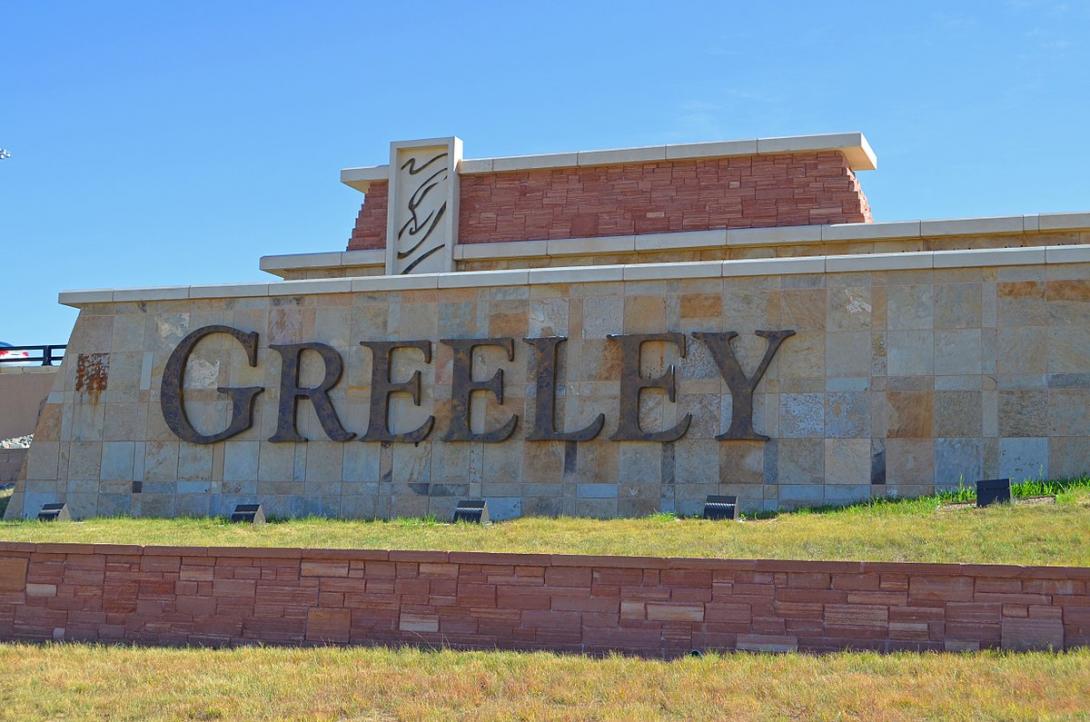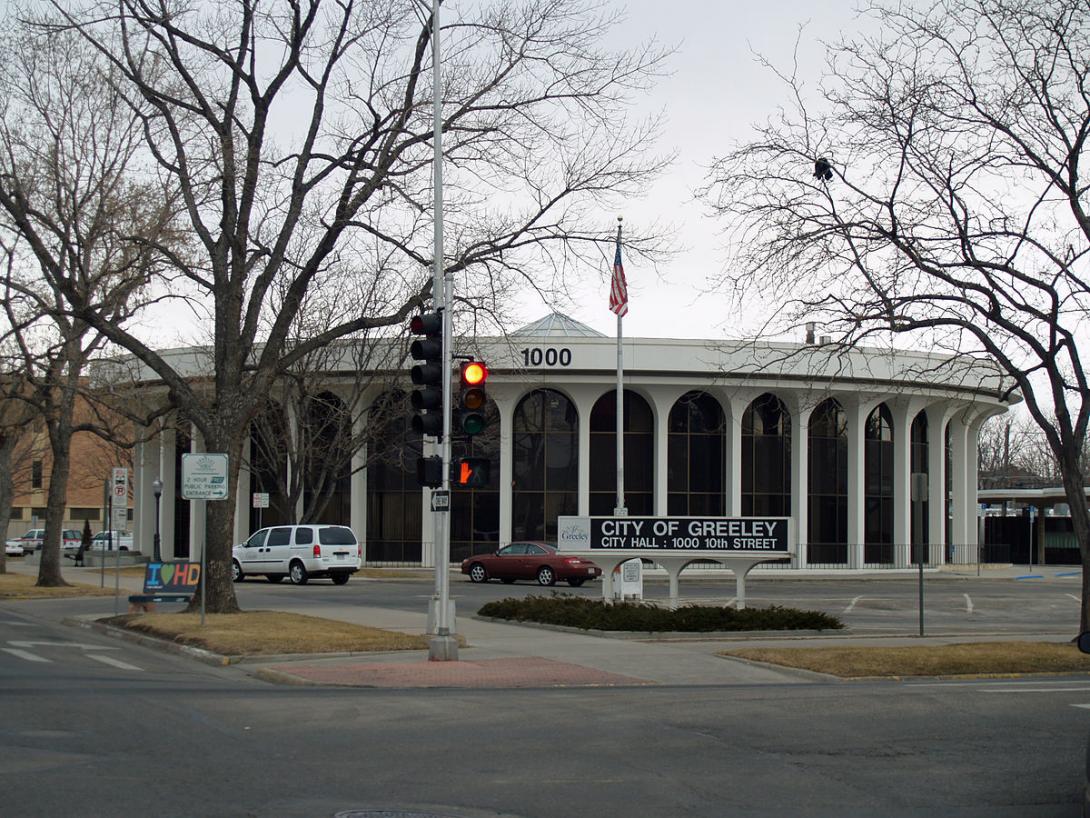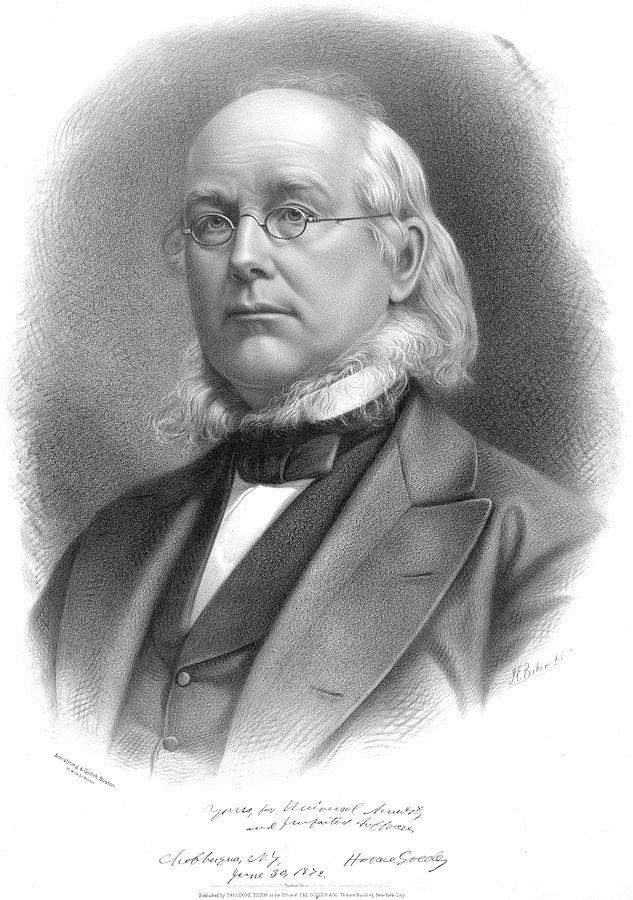Greeley
Full Article
Greeley is a growing community of 100,000 people along the Front Range in northeastern Colorado. Founded as an agricultural colony in 1870, the city has an economic, political, and cultural reach that extends far beyond its municipal borders. Greeley is the county seat of Weld County, one of the state’s richest agricultural regions and one of the most prolific zones for oil and natural gas development.
Greeley and its residents have long tied their hopes and fortunes to the production of commodities consumed both locally and in distant global markets. The city’s founders played a major role in the creation of water law in Colorado and across the American West. Local beef barons pioneered business concepts in Greeley that have influenced meat production worldwide, and the agricultural industries in and around Greeley continue to serve as a magnet for immigrant and refugee workers from as far as Latin America, East Africa, and Southeast Asia. Early residents of Greeley also established Colorado’s first teaching college, now called the University of Northern Colorado. It has trained, and continues to train, more educators than any other school in the state.
Agricultural Heritage
The City of Greeley began in 1870 as a colony of 480 would-be agriculturalists, each with enough money to survive for a year and a desire to build a utopian community based on irrigation, faith, family, and temperance. The colonists moved as a group into Arapaho and Cheyenne territory, spurred by the conviction that the future homestead movement would favor communal over individualistic settlement. Nathaniel Meeker, a journalist for Horace Greeley’s The New-York Tribune, bought the land for the Union Colony near the confluence of the South Platte and Cache la Poudre Rivers. The city was eventually named “Greeley” after the Tribune’s owner, a famous western booster known for popularizing the phrase, “Go West, young man.”
Aware that they would have to reroute river water to grow anything in Colorado’s semi-arid climate, the Union Colonists dug irrigation ditches immediately upon their arrival. Carving the canals was not easy, but by 1888 the colonists had built three major ditches capable of irrigating 90,000 acres of land.
In the dry summer of 1874, when the Cache la Poudre River did not have enough water to supply the irrigators in Greeley and more recent arrivals in upstream Fort Collins, members of local ditch companies began discussions that would lead to the establishment of formal water law in Colorado. Greeley’s irrigators believed they had earned the right to their water supply because they had first diverted it. Their rationale eventually became legal precedent. Five years after the 1874 water meetings, the state legislature codified Colorado’s prior appropriation doctrine, which assigns water rights based on a “first in time, first in right” approach. Several other Western states adopted the doctrine as they wrote their own water laws in later years.
Agriculture has been a mainstay in Greeley’s economy since the founding of the Union Colony, despite periodic booms and busts. For example, Northern Colorado farmers suffered heavy losses during the Dust Bowl years of the mid-1930s, but in the decades before and after they benefitted significantly from the increased demand and expanded market access brought by World War I and World War II. Farmers primarily grew potatoes and sugar beets in the early days of Greeley agriculture, until blight reduced potato yields and corn-based sweeteners began to out-compete sugar beets starting in the 1940s. Today, farmers around Greeley grow baby carrots, onions, sugar beets, potatoes, alfalfa, feed corn, wheat, barley, dry beans, and oats. Weld County is the richest agricultural county east of the Rocky Mountains and leads the state in the value of agricultural products sold.
These days, Greeley’s top agricultural products are not crops, but livestock—an economic legacy of the Monfort family, who pioneered the concept of the large-scale livestock feedlot. Shortly after World War I, father and son Warren and Kenneth Monfort began keeping their cattle in a pen and feeding them surplus crops; this way, they could both fatten them up faster and make them available year-round instead of only at fall round-up time. After World War II, when demand for beef climbed, the Monforts expanded their family cattle farm into a multi-billion-dollar international corporation—Monfort of Colorado, Inc.—that raised, slaughtered, packaged, and distributed beef. By taking over nearly all of the butchering and transportation logistics involved in meatpacking, the Monforts cut out middlemen almost entirely. The “boxed beef” model they pioneered is now an industry standard. By the time Kenneth Monfort sold the family business to ConAgra for $365 million in 1987, it was one of Greeley’s largest employers and one of the world’s biggest beef operations. Since 2007 the Greeley meatpacking facility has been owned and operated by the Brazilian firm JBS, which made its US headquarters there.
Immigrant Labor
Greeley’s agricultural industries have been powered by immigrant labor since their inception. The boom in sugar beets in at the turn of the twentieth century spurred the construction of large sugar plants in Greeley and surrounding communities, which in turn boosted local beet production and demand for laborers in the beet fields. The Great Western Sugar Company recruited German workers from Russia, and Japanese workers from the Pacific Coast. Some of these migrant workers saved their earnings and purchased their own farmland in the area. By the 1920s, workers from Mexico and Latin America provided another important source of labor for sugar beet production.
Immigrants—documented and undocumented—continue to play a central role in Greeley’s agricultural economy. The meatpacking industry relies heavily on immigrant labor to fill eight-hour standing shifts on the killing floor, where employees perform gory work and navigate safety hazards. Meatpacking’s current dependence on immigrant labor is not without controversy or conflict. On December 12, 2006, federal immigration agents raided Swift & Co.’s meatpacking plant in Greeley, along with company plants in five other Western cities. At the time, it was the largest immigration raid ever carried out in the United States. Immigrations and Customs Enforcement agents arrested 1,297 undocumented workers, including 273 from the Greeley plant, and sent them to detention and deportation centers in other states. The immigrant community in Greeley is still adjusting to life after the raids. More than 200 children in Greeley came home that day to find one or both parents gone.
In 2007 JBS, the new owners of the meatpacking plant, went on a hiring spree to make up for the workers lost from the raid and to reinstitute a second shift at the plant. JBS increased its workforce from 2,000 in 2007 to 5,000 in 2010, making it the largest employer in Weld County. When JBS’s initial efforts failed to recruit enough new hires, the company began recruiting refugees who have been granted political asylum in the United States, including Somalians and Burmese. In 2010 JBS estimated that refugee workers made up 15 percent of its workforce. According to the 2010 census, Greeley’s ethnic make-up was 59 percent white, 36 percent Hispanic or Latino, and 5 percent a mix of Black or African American, Asian, and American Indian.
Like the new Westerners before them, these most recent arrivals are bringing novel cultural dimensions to Greeley. In addition to Greeley’s many tortillerias and the Mexican American Studies Club at the University of Northern Colorado, there is now an East African Halal market downtown and a Somali-speaking teller at the Wells Fargo bank. At JBS, the union handbook is being printed in English, Spanish, Burmese, and Somali, and prayer breaks are now granted during Muslim holidays.
Energy Development
In 1870 Greeley’s founders very purposefully located their new community near one highly important resource: water. What they could not have known was that they accidentally placed their community atop another set of resources crucial to the future: oil and natural gas. The area around Greeley, known by energy producers as the Wattenberg Field, is Colorado’s most prolific region of hydrocarbon production. More than 20,000 oil and natural gas wells have been drilled in the area since the 1970s. The field is currently experiencing a new boom in production thanks to the combination of two extractive techniques—horizontal drilling and hydraulic fracturing (often referred to as “fracking” for short) —that have made it possible to extract oil and natural gas from geologic formations that previously would not release their fossil fuels. Horizontal drilling accesses more oil and gas underground by putting the well in contact with oil-and-gas-laden rock for up to two miles, while hydraulic fracturing unlocks more oil and gas by cracking open that rock with fluids injected into the well at high pressure. In early 2013, wells in the Wattenberg Field were producing 120,000 barrels of oil per day, or about three quarters of the state’s overall oil production.
Historically, most oil and natural gas wells in the area were located in farmers’ fields, miles from Greeley’s population center. Today, a growing number of wells are being drilled in the midst of suburban and exurban residential areas, stoking concerns about safety, public health, and environmental damage among some residents. In 2012 and 2013, the Front Range cities of Longmont and Fort Collins attempted to enact drilling bans within their city limits. Greeley’s residents made a similar effort by citizen-initiated ballot measure decades earlier in 1985, but Greeley’s local ordinance was overturned by the Colorado Supreme Court in a 1992 case because it conflicted with the state’s governance of oil and natural gas extraction. In the decades since, Greeley’s planners and leaders have worked to find ways to coexist with oil and natural gas extraction. That process of compromise continues today, as local officials expect Greeley’s current total of about 400 wells within city limits to grow to 1,600 in the coming years.
Planning for the Future
Weld County is currently among the fastest-growing counties in the state of Colorado. Population growth in Greeley and the surrounding area has resulted in a renegotiation of the relationship between agriculture, suburban development, energy extraction, and water resources. Real estate companies are purchasing agricultural lands for residential development. Cities are purchasing agricultural lands for the water rights tied to them, a process nicknamed “agricultural buy and dry.” And energy companies are purchasing agricultural lands in order to build concentrated hubs for oil and natural gas operations. Not only are these changes emblematic of shifting land use patterns in Northern Colorado, but they make Greeley and Weld County exemplary of many issues facing the twenty-first century American West.
Some of this dynamism has been expressed through political experimentation. During the 2013 elections, for example, Weld County joined ten neighboring northeastern Colorado counties in an attempt to secede from the state because of rural residents’ opposition to Colorado’s energy, agriculture, and gun regulations. The “51st state” measure did not pass, but the vote testified to differences of opinion between urban and rural voters in the county, with 66 percent of Greeley residents opposing the idea compared to 52 percent of voters in the rest of Weld County.
As Greeley and Weld County residents chart their path into the future, expect them to continue to exert influence beyond their jurisdictional boundaries. In addition to occupying the confluence of two of Colorado’s major rivers, this vibrant and diverse community is positioned at the junction of some of Colorado’s most prominent economic, political, and cultural currents.











































